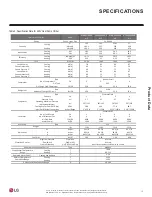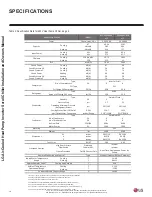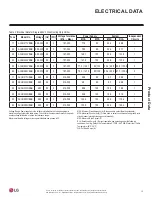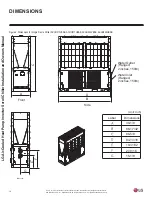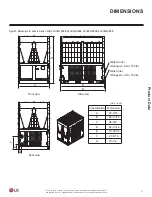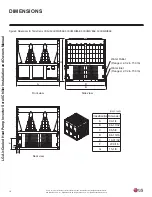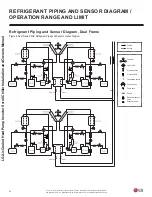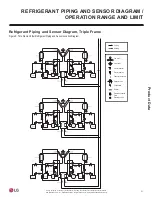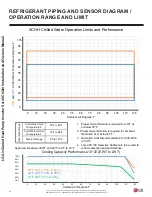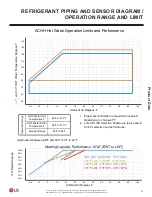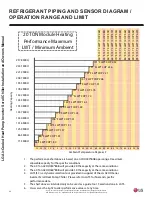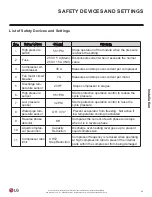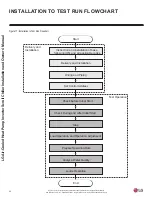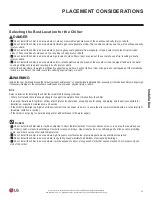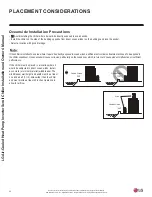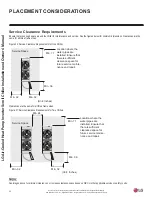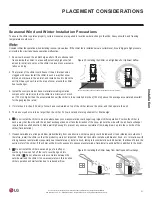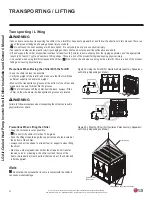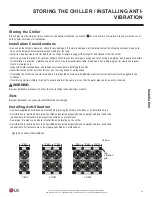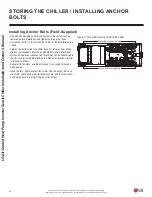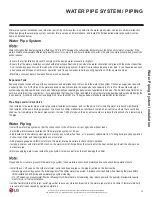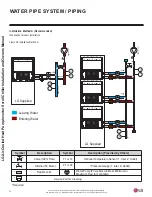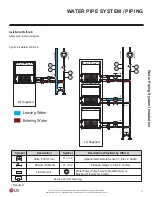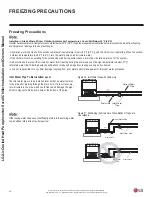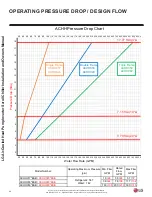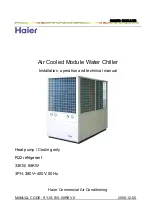
27
Installation
Due to our policy of continuous product innovation, some specifications may change without notification.
©LG Electronics U.S.A., Inc., Englewood Cliffs, NJ. All rights reserved. “LG” is a registered trademark of LG Corp.
PLACEMENT CONSIDERATIONS
Selecting the Best Location for the Chiller
DANGER
• Do not install the chiller in an area where oil, steam, or emulsified gas are present; these will cause bodily injury or death.
• Do not install the chiller in an area where flammable gas could generate or flow; this condition could cause a fire, which will cause bodily
injury or death.
• Do not install the chiller in an area where corrosive gases could generate, flow, stagnate, or leak (coolant could leak from corroded
pipes). These conditions could cause a fire, resulting in bodily injury or death.
• Do not install the chiller in an area where high levels of carbon fiber or dust are present; these could cause a fire, resulting in bodily
injury or death.
• Do not install the chiller in an area where acidic or alkali solutions may be present; these could corrode the pipes if added to the water,
causing antifreeze to leak, and resulting in bodily injury or death.
• Install the chiller where its weight is sufficiently supported, and where it will not fall over from strong winds or earthquakes. If the installation
location is insufficient, the chiller could fall, causing physical injury or death.
WARNING
Install a fence or barricade around the chiller to prevent animals and / or unauthorized individuals from accessing it. Install a boundary or danger sign
if necessary. Damage to the components could cause fire, explosion, physical injury, or death.
Do’s
Select a location for installing the chiller that meets the following conditions:
• Where it is flat and there is enough strength to support the weight of and vibration from the chiller.
• In an area that allows for optimum airflow at both inlet and outlet sides; enough space for wiring, and piping; and is easily accessible for
installation, inspection, maintenance, and service.
• If the chiller is installed in a highly humid environment (near an ocean, lake, etc.), ensure the site is well-ventilated with a lot of natural light
(Example: Install on a rooftop).
• If the chiller is not going to operate during winter, add antifreeze to the water supply.
Do Not’s
•
Do not install the chiller where it will be subjected to direct thermal radiation from other heat sources, or in an area that would expose
the chiller to heat or steam like discharge from boiler stacks, chimneys, steam relief ports, air conditioning units, kitchen vents, plumbing
vents, and other sources of extreme temperatures.
• Do not install the chiller in an area where high-frequency electrical noise / electromagnetic waves will impact operation.
• Do not install the chiller in an area where its operating sound will disturb inhabitants of surrounding buildings.
•
Do not install the chiller in an area where it will be exposed to direct, strong winds. Verify that seasonal winds do not impact only one
side of the chiller.

